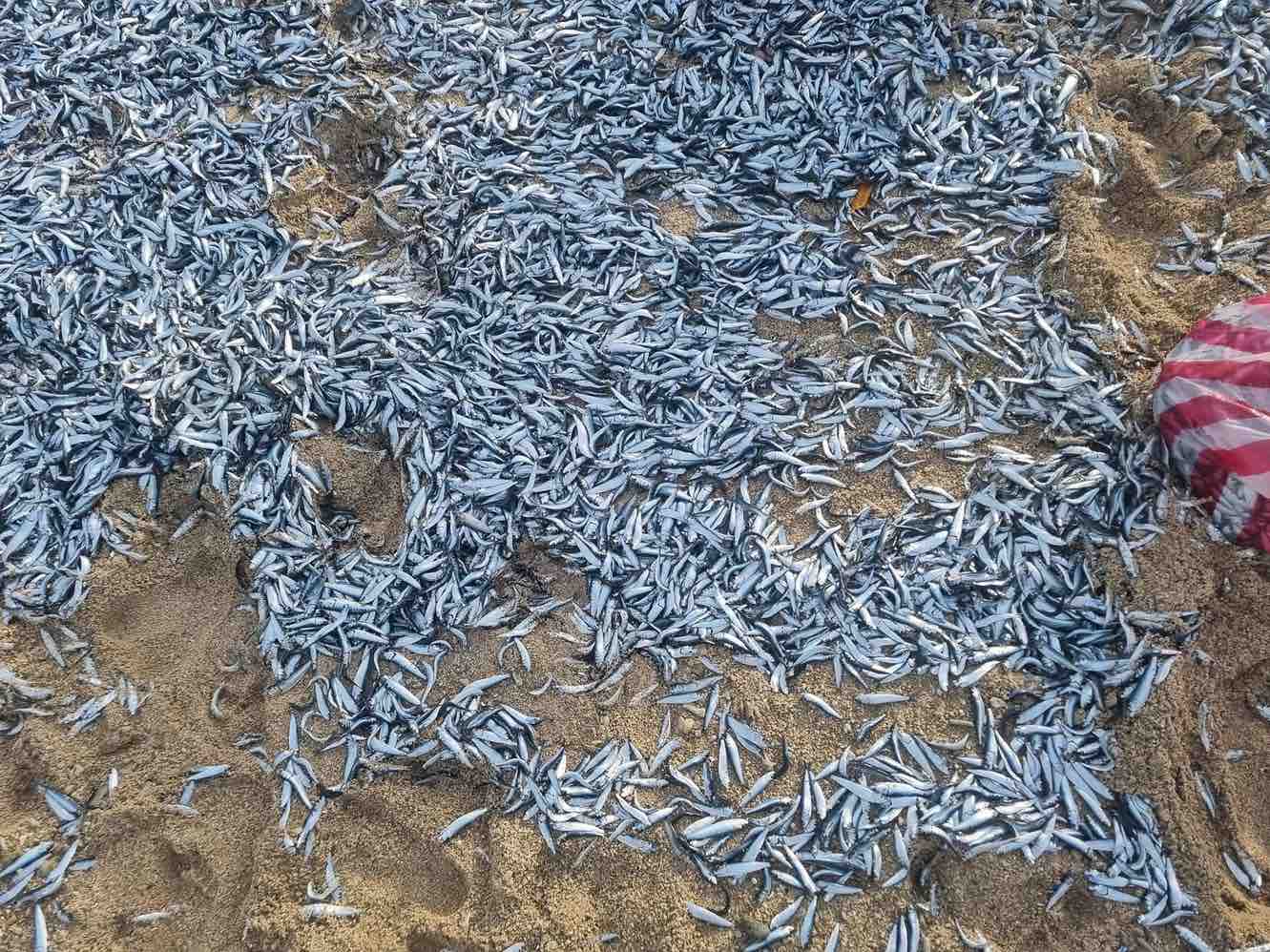After sardines filled Sarangani shores, earthquake hits two days later. Are they connected?
An earthquake hit the waters off Sarangani island in Davao Occidental on the morning of Jan. 9. Last Jan. 7, or two days ago, a school of sardines was swept to the shores of Maasim town.
The whole shebang seemed a blessing from above for residents, foreboding for others—and just yet another aquatic phenomenon for experts.
Social media was teeming with photos of the incident, showing how streaks of silver covered the sand.
But the superstitious ones thought that it’s too good to be true and that it’s a bad omen.

Such a belief was reinforced when a magnitude 6.7 earthquake rocked the area and was also felt in Indonesia’s Talaud island. It was at Intensity IV, or moderately strong.
Some individuals believe the fish “felt” the impending earthquake and that their being swept is directly related to the seismic activity.
But that’s least likely the case, based on science.
Nazario Briguera, Bureau of Fisheries and Aquatic Resources' chief information officer, told PhilSTAR L!fe it was probably due to a phenomenon called “upwelling.”
The National Ocean and Atmospheric Administration (NOAA) defines upwelling as a process in which deep, cold water rises toward the surface.
NOAA said the water that rises to the surface due to upwelling is typically colder and rich in nutrients, which then “fertilize” surface waters, resulting in high biological productivity.
“Nagti-trigger din ito ng pag-ibabaw ng nutrients, which in turn nagpapadami ng plankton,” Briguera said. “Ito yung hinahabol ng mga tulad ng sardines. Possibly, ito yung naging dahilan kung bakit dumagsa sila doon sa tabing-dagat.”
Briguera said another possibility is that the school of sardines might be running away from predators like tuna.
He also noted that the Sarangani incident wasn’t the first of its kind, as it had occurred years ago in places like Masbate.
In line with the connection between the two incidents, Robelyn Mangahas-Flores, science research specialist at the Philippine Institute of Volcanology and Seismology (PHIVOLCS), told L!fe that there are no scientific studies yet that have been conducted that fully relate earthquake events and animal behavior.
“Unusual animal behavior has not been consistently seen days before an earthquake,” Flores said. “Therefore, the two events occurred as separate phenomena and may not be interrelated.”
Flores cited as an example the Nov. 17, 2023, Davao Occidental quake, which affected the same area but wasn’t preceded by any unusual animal behavior.

Cirilo Aguadera Lagnason Jr., a researcher at the Department of Environment and Natural Resources-Soccsksargen, also pointed out that whether there’s so-called beaching of sardines or not, earthquakes occur because of the presence of a fault in the Celebes Sea and the location of Philippines in the Pacific Ring of Fire.
“This phenomenon is also experienced in some areas of the Philippines, including Zamboanga, Masbate, and Dipolog,” Lagnason told L!fe.
In the meantime, it’s a win-win: Locals were able to take home a bountiful harvest, and PHIVOLCS said there were no expected damages and there were no tsunami threats resulting from the quake. (with reports from Brooke Villanueva)


